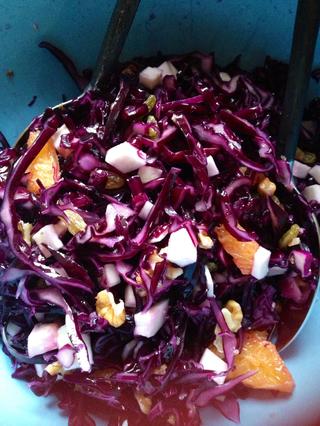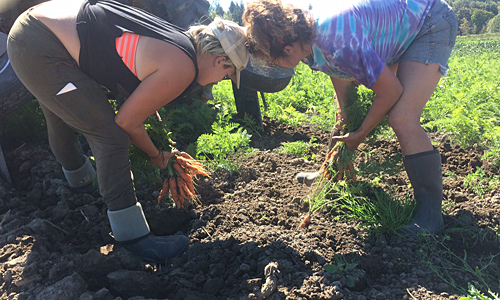Standard

Red Kale 1 bu
Red or Green Cabbage 1 hd
Broccoli 1.5 lb
Bunched Carrots 1 bu
Dill 1 bu
Cucumber 1
Garlic 2 bulbs
Leeks 2
Rolled Oats 2 lb
Small

Green Beans .5 lb
Broccoli 1.5 lb
Leek 2
Red or Green Cabbage 1 hd
Chioggia Beets with Greens 1 bu
Basil .25 lb
Cherry Tomatoes .5 pt
Red Cabbage
Red cabbage’s primary characteristics — its red hue and bitter, peppery flavor — signify that you’re getting two types of cancer-preventing substances. The red pigment comes from plant-based chemicals called flavonoids, while the sharp flavor is the result of sulfur-based compounds. In addition to these important phytochemicals, cabbage contributes to your overall health with fiber and a range of vitamins (especially C, A, E and K) and minerals (including manganese, iron, calcium, zinc and phosphorus).
Raw cabbage, either red or green, is soothing for the digestive system and great for cleansing the body. It is a rich source of calcium and iodine. Outer leaves are better than inner leaves for calcium and vitamin E content since the inner leaves are not exposed to the sun.
Shred for use in salads or slaws. To cook, lightly steam, sauté, or stir-fry. Serve hot with one of the following: garlic and butter or olive oil; coriander; chopped fresh parsley, cilantro or dill; sour cream and caraway seeds or paprika. It is also delicious cooked slowly and gently with onions and a dash of red wine.

Raw Red Cabbage Salad
Thinly slice 1/2 head red cabbage and put in a large bowl. Add 1 tablespoon salt and work through the cabbage with your hands. Squeeze and massage it for about 5 minutes, until juice starts to run from the cabbage. Rinse in cold water to remove the salt, and squeeze dry.
Juice one orange and peel and cut another into bite-sized pieces. Mix with the cabbage, add cut up apples and pears, diced walnuts, golden raisins, and any other dried fruit you may have. Mix well and enjoy!
Recipe from snapguide.com.
Chioggia Beets & Greens

Chioggia beets are distinguished by their concentric ring pattern of magenta pink and white.
This beautiful and flavorful beet is an Italian heirloom variety developed around 1840. It was named for the town in which it was first cultivated, the island fishing village of Chioggia, near Venice.
Also called Candy Stripe and Bull’s Eye beet, Chioggias can be roasted, steamed, braised, and pickled. Roasting the beet will bring out the most flavor. They can be served cold or hot, and are a great salad beet, whether served alongside greens or as the main ingredient. They pair well with bacon, apples, butter, cheeses, cucumbers, creme fraiche, hard-cooked eggs, fennel, mustard, oranges, parsley, smoked fish, shallots, vinegars, and red wine.
Chioggia Beets in Vinaigrette
1 lb Chioggias
3 Tbsp. thinly sliced scallions
2-to-2 1/2 Tbsp. raspberry vinegar
2 tsp. fresh lemon juice, or to taste
2 Tbsp. chopped fresh mint
1 Tbsp. finely grated fresh orange zest
1/2 tsp. salt
1/2 tsp. black pepper
1/4 cup olive oil
Fresh mint sprigs for garnish
Cover beets with water in a saucepan and simmer until tender, about 30 minutes. Drain and rinse under cold running water. Let stand until cool enough to handle, then slip off and discard skins. Cut beets into 1/4-inch-thick slices.
Stir together scallions, 2 tablespoons vinegar, lemon juice to taste, mint, zest, salt, and pepper in a bowl. Add oil in a slow stream, whisking until combined. Add warm beets and toss with vinaigrette and vinegar and salt to taste. Serve warm or slightly chilled. Don’t forget to steam and enjoy those nutritious greens!

